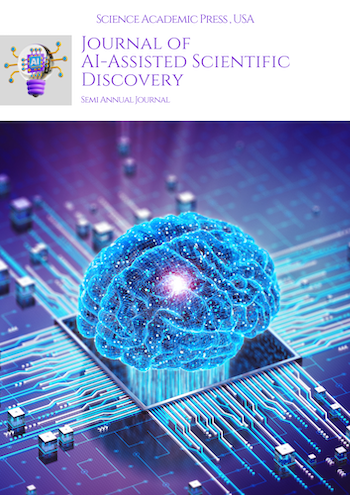Published 20-08-2021
Keywords
- Artificial Intelligence,
- Machine Learning,
- Python,
- Deep Learning

This work is licensed under a Creative Commons Attribution-NonCommercial-ShareAlike 4.0 International License.
Abstract
In the constantly evolving landscape of Artificial Intelligence (AI), programming language selection has a defining role in the generation of innovation. This paper examines the harmonious dance between Python and AI, a language that has emerged to be the spine of intelligent systems. In a comprehensive review, we bring forth Python's heterogeneity and dominance in AI design, with applications in real life in machine learning, deep learning, natural language processing, robotics, and more.
A deeper look into the strengths of Python—simplicity, rich libraries, and supportive community—offers a sufficient reason why it is now the choice of AI researchers and developers. No technology is flawless, though; hence, we also mention the shortcomings of Python, such as performance bottlenecks and runtime issues, to present an overall picture.
Since a tremendous amount of programming languages are used in AI, the paper also provides a comparative summary of popular AI-guided languages in terms of their efficiency, scalability, and usability for various AI applications. By providing an overview of Python's prevalence and placement among other AI languages, the research seeks to offer developers, researchers, and professionals decision-making information for AI-project deployment.
Downloads
References
- H. Bhasin, Python Basics: A Self-Teaching Introduction, Mercury Learning and Information, 2019.
- Artificial Intelligence with Python, Tutorials Point (I), Pvt. Ltd., 2016.
- P. Joshi, Artificial Intelligence with Python, Packt Publishing, January 2017.
- S. Raschka, J. Patterson, C. Nolet, “Machine Learning in Python: Main Developments and Technology Trends in Data Science, Machine Learning, and Artificial Intelligence,” Information, April 2020.
- W. Ertel, Introduction to Artificial Intelligence, Second Edition, Springer International Publishing AG, 2017.
- J. P. Muller, Beginning Programming with Python for Dummies, 2nd Edition, John Wiley & Sons, Inc., 2018.
- C. Albon, Machine Learning with Python Cookbook, O’Reilly Media, Inc., 2018.
- TensorFlow, Tutorials Point (I), Pvt. Ltd., 2018.
- F. Pedregosa et al., “Scikit-learn: Machine Learning in Python,” Journal of Machine Learning Research, vol. 12, pp. 2825-2830, 2011.
- Theano. Available: http://deeplearning.net/software/theano/#. Accessed: 28-Sep-2019.
- Keras. Available: https://keras.io/about/. Accessed: 28-Sep-2019.
- NLTK. Available: https://www.nltk.org/. Accessed: 28-Sep-2019.
- TechVidvan. Available: https://techvidvan.com/tutorials/python-advantages-and-disadvantages/. Accessed: 28-Sep-2019.
- Edureka! Available: https://www.edureka.co/blog/advantages-and-disadvantages-of-python/#Disadvantagesofpython. Accessed: 28-Sep-2019.
- Existek. Available: https://existek.com/blog/ai-programming-and-ai-programming-languages/. Accessed: 28-Sep-2019.
- Python. Available: https://www.python.org/doc/essays/comparisons/. Accessed: 28-Sep-2019.


